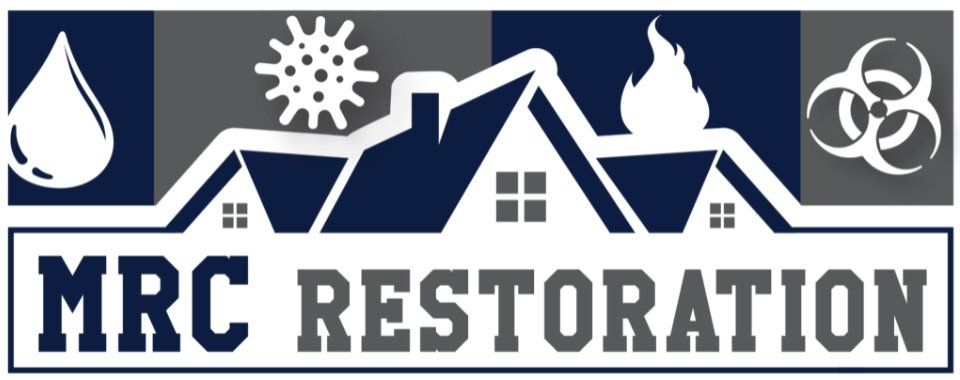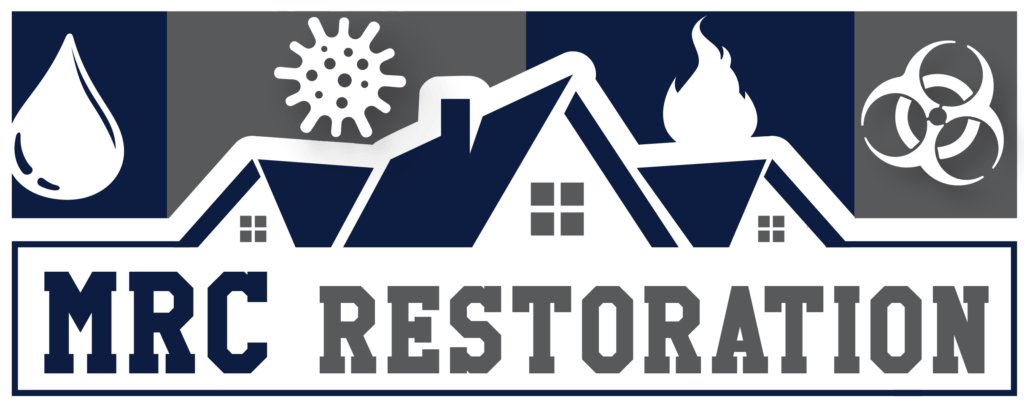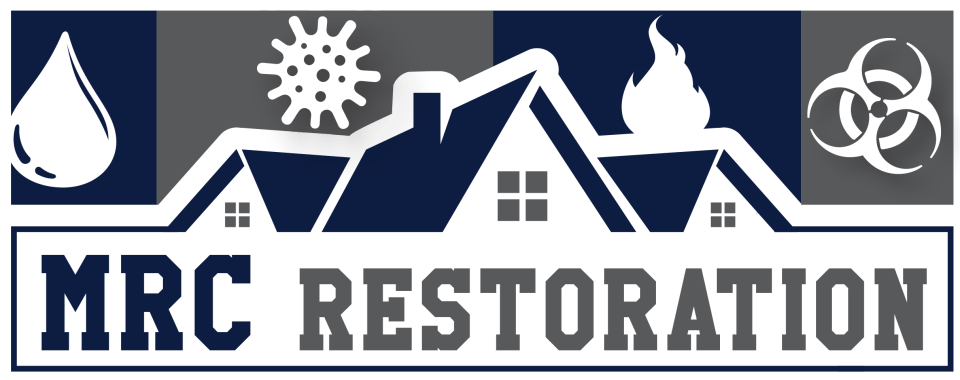Call the Trusted Local Leader Today!
Frozen Pipe Repair and Restoration
Swift Frozen Pipe Repair and Restoration Services
Frozen and burst pipes can wreak havoc on homes and businesses, leading to significant water damage, structural issues, and costly repairs. At MRC Restoration, we understand the urgency of these situations and are equipped to respond swiftly, often within two hours of your call.
Our IICRC-certified technicians possess extensive experience in dealing with water damage caused by:
- Frozen pipes
- Burst pipes
- Ice dams
- Flooding
- Sewer backups
We recognize that frozen pipes can burst due to the immense pressure exerted by the expanding ice, causing water to spill continuously into the property. This can result in:
- Water damage to walls, ceilings, floors, and belongings
- Rapid mold growth in the damp environment
- Tens or hundreds of thousands of dollars in repairs and lost income
Pipes in unheated interior spaces, along exterior walls, or in areas with inadequate insulation are particularly susceptible to freezing. Our team is well-versed in identifying and addressing the root causes, such as extremely cold temperatures, improper thermostat settings, structural cracks, or gaps that allow cold air infiltration.

Get A Free Quote
For more information or to schedule service, complete the form below or call us at (573) 315-6143.
Contact Us
We will get back to you as soon as possible.
Please try again later.
Preventive Measures
- reventing frozen pipes and the subsequent water damage requires a proactive approach. At MRC Restoration, we recommend taking the following precautionary measures:Insulate exposed pipes, especially in unheated areas like basements, attics, and garages. Pipe insulation is an affordable solution, costing as little as $0.50 per linear foot.
- Keep garage doors closed, particularly if there are water supply lines present.
- Open kitchen and bathroom cabinet doors to allow warm air circulation around plumbing, especially for sinks on exterior walls.
- Let cold water drip from faucets served by exposed pipes to keep the water moving and prevent freezing.
- Maintain a consistent thermostat temperature of at least 55°F (13°C) throughout the day and night, even when away from home.
Additionally, consider the following long-term preventive measures:
- Add insulation to attics, basements, and crawl spaces to maintain higher temperatures in these areas.
- Seal cracks and openings around windows, doors, and sill plates to prevent drafts.
- Install pipe heat cables and storm windows for enhanced protection.
- Relocate exposed pipes to more insulated areas, if possible.
Emergency Response
In the event of a frozen pipe bursting, swift action is crucial to mitigate further damage and initiate the restoration process. Here are the immediate steps to take:
- Shut off the main water valve to stop the flow of water into the property. If you can't locate the main valve, shut off the valve supplying water to the burst pipe.
- Turn off electricity to the affected area to prevent electrical hazards from standing water.
- Contact a licensed plumber to properly repair the burst pipe and address any related damage. Avoid attempting repairs yourself unless you are a qualified plumber.
- Call a reputable water restoration company, like MRC Restoration, to begin the cleanup and drying process. Prompt action can minimize overall damage and restoration costs, as some insurance policies require claims to be filed within 48 hours.
Restoration Process
For extensive water damage or potential mold growth, calling professional restoration services like MRC Restoration is crucial. We have the specialized equipment and expertise to handle the situation effectively and safely. Our IICRC-certified technicians will:
- Assess the Damage: We thoroughly inspect the affected areas to determine the extent of water damage and potential structural issues.
- Water Extraction and Drying: Using powerful truck-mounted vacuums and industrial-grade dehumidifiers, we extract standing water and dry out any remaining moisture to prevent mold growth.
- Content Restoration: We carefully evaluate and restore salvageable items, such as furniture, documents, and personal belongings, using specialized techniques and equipment.
- Structural Repairs: Our team assesses and undertakes any necessary repairs to restore the property's structural integrity, including drywall, flooring, and insulation replacement.
Throughout the restoration process, we work closely with insurance providers to streamline the claims process for homeowners and businesses. Homeowners insurance typically covers sudden and accidental water damage, but it's essential to review your policy for specifics and file claims promptly.
Frozen Pipe Prevention Tips
- Allowing water to drip from a faucet can help prevent damage from frozen pipes. Dripping water can reduce the chance of the pipes bursting if they do freeze.
- MRC Restoration recommends winterizing outside faucets to prevent frozen pipes and burst pipes. Then, disconnect the garden line from the outside faucet to check if it is frost-free. If the outdoor faucet isn’t frost-free, you need to turn off the water supply and drain it.
- Insulate all pipes. Pipes that are near the outside air, crawl spaces, attics, or other exposed areas are more susceptible to freezing. To prevent pipes from freezing, purchase pipe insulation and foam tape from any hardware store.
- Turn on the thermostat. A good rule is to locate the lowest temperature in your home where pipes are located. Make sure that your temperature is not below 32 degrees Fahrenheit.
- If the pipes are on outside walls, it is a good idea to keep the doors open in your kitchen and bathroom cabinets.
- If there are water supply lines to the garage, keep garage doors closed. This will insulate your home.
- Seal any leaking windows or doors. When it is cold, windows can freeze if they are hit by wind gusts. Foam sealant can be applied to windows with air leakage. You can prevent pipes from freezing and save money on your energy bills.
- Watch out for water pressure fluctuations: Pay attention to water pressure. Irregular water pressure can indicate serious plumbing issues such as blockages or leaks. It could also mean that your pipes are more likely to freeze. You can identify the cause of unusual water pressure and fix it to prevent pipes from freezing.
- Locate the main water valve shut off. If a pipe bursts, immediately turn off the water shutoff valve to stop further water damage. It could cost hundreds of dollars to waste time looking for the shut-off valve after a loss
- Always keep emergency numbers handy: Your insurance agent, a licensed plumber, and MRC Restoration number, 573-315-6143 are all available in an emergency.
-
Saint Francois County
- Farmington
- Park Hills
- Bonne Terre
- Desloge
- Leadwood
- Bismarck
- Iron Mountain Lake
- Doe Run
- Terre du Lac
- French Village
-
Jefferson County
- Arnold
- Festus
- Imperial
- Hillsboro
- De Soto
- Pevely
- Herculaneum
- Barnhart
-
Washington County
- Potosi
- Mineral Point
- Caledonia
- Irondale
- Belgrade
- Cadet
- Richwoods
- Shirley
- Tiff
- Blackwell
-
Madison County
- Fredericktown
- Marquand
- Cobalt Village
-
Iron County
- Ironton
- Pilot Knob
- Arcadia
- Viburnum
- Annapolis
- Des Arc
- Glover
- Belleview
- Middle Brook
A Bit About Us
Why Hire Us?
1
Each Crew is IICRC Trained & Certified
2
Recommended by Insurance Providers
3
99.9% Satisfaction Rating
4
Google Rating of 5.0 from 40+ Reviews
Frequently Asked Questions
About Burst and Leaking Pipes
-
How much does it cost to fix a frozen pipe?
Pipes that are thawing - or only partially frozen - often leak before they burst. Take action as soon as you see a leak! Stop the water immediately and call a plumber. Repairing leaking pipes costs an average of $150 to $350, according to HomeAdvisor's True Cost Guide. Depending on the size and location of the damage, surrounding drywall repair may cost another $250 to $750.
-
How long does it take for a pipe to unfreeze?
Waiting for nature to take its course could be an exceptionally long wait. Location and circumstance will determine how long this wait will be. You can unfreeze them in 30 minutes with human intervention, depending on the method used.
-
Will pouring hot water down the drain unfreeze pipes?
In most cases, you can use this method only if the drain is frozen. On the stove, heat a pot filled with a half-gallon of water. As soon as it boils, remove it from the stove and pour it slowly down the drain. You might be able to completely clear your drain after thawing the ice.
-
When should you call a plumber for frozen pipes?
Before attempting to thaw a frozen pipe, turn off the main water valve and open a nearby faucet. Be sure there are no already ruptured or cracked pipes. You may need a plumber if this is the case. The safest way to thaw a frozen pipe is with a hair dryer or heat gun. Whenever you use a propane torch, be extremely careful - old, dry wood (which surrounds pipes) easily catches fire. It's still a good idea to call a plumber even if the pipe isn't broken - some plumbers will replace a frozen section of pipe rather than thaw it.
-
Will a frozen pipe always burst?
Even frozen pipes do not always burst if water can escape through an open faucet due to the expanding ice. Pipes freeze very quickly, so the time between freezing and burst can be quite short.
-
Does homeowners insurance cover a burst pipe?
Homeowners' insurance policies typically cover accidental water damage caused by an unexpected occurrence, such as a burst pipe. Also covered are cleaning, drywall repair, or replacement due to water damage caused by a burst pipe, as well as furniture. You may choose to contact your insurance agent or adjuster to verify proper coverage.
-
How long does it take to fix a burst pipe?
It usually takes between one and four hours to fix a broken water pipe. Fixing a broken water pipe will take some time depending on a number of factors. A technician must determine how large the break is. After that, the repairs may begin.
GET A FREE QUOTE
When disaster strikes, you need to make sure your home or business is restored back to its original state. Our team of professionals will get to work quickly and efficiently to fix any issues caused by water damage. Rest easy knowing the job is in the right hands with MRC Restoration. Our skilled professionals are here to help you every step of the way. Making your life better is our priority.
MRC Restoration Provides Peace of Mind, in Uncertain Times.
When tough times hit, it's natural to feel overwhelmed. At MRC Restoration, we're here to support you through every step of the journey. We collaborate with your family to evaluate the situation, craft a personalized strategy, and execute it with precision, restoring your home or business to its former glory.

For Both Residential & Commercial Water cleanup, Fire and Smoke Damage Repair & Mold Remediation Services, Call the Trusted Local Leader Today for Your Evaluation!
Service Area
Services
Hours
Friday - Open 24 hours
Saturday: Open 24 hours
Sunday: Open 24 hours
Monday: Open 24 hours
Tuesday: Open 24 hours
Wednesday: Open 24 hours
Thursday: Open 24 hours
All Rights Reserved | MRC Restoration

